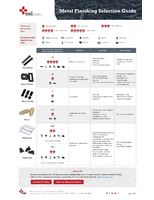Digital Gyroscope supports motion sensing user interfaces.
Press Release Summary:
With resonant frequency above audio bandwidth, 3-axis Model L3GD20 is immune to audio noise and vibrations, making motion-sensing user interfaces realistic in mobile phones, tablets, and game consoles. Gyroscope offers user-programmable full-scale ranges from ±250 dps to ±2,000 dps, with low values for slow-motion sensing and high values for detecting very fast gestures and movements. Housed in 4 x 4 x 1 mm package, device operates from 2.4-3.6 V supply and provides 16-bit data output.
Original Press Release:
STMicroelectronics Delivers the Ultimate in Motion-Sensing Realism with New Digital Gyroscope
Superior sensor resolution couples with audio and mechanical noise immunity
GENEVA, -- STMicroelectronics (NYSE: STM), a global semiconductor leader serving customers across the spectrum of electronics applications and the leading supplier of MEMS (Micro-Electro-Mechanical Systems) for consumer and portable applications,[1] has expanded its motion-sensor portfolio with a new high-performance three-axis digital-output gyroscope. Housed in a 4x4x1 mm package, ST's L3GD20 combines high sensing resolution with outstanding immunity to audio noise and vibrations, making motion-sensing user interfaces more realistic in mobile phones, tablets, game consoles, and other smart consumer devices.
With a resonant frequency above the audio bandwidth, ST's newest 3-axis digital gyroscope operates with greater accuracy and reliability, because it is completely immune to both mechanical vibrations coupled through the printed circuit board and to audio noise, such as from speakers mounted close to the sensor. Furthermore, its advanced design, with a single sensing structure for motion measurement along all three orthogonal axes,[2] further increases sensing accuracy and reliability and guarantees excellent output stability over time and temperature.
The L3GD20 gyroscope offers a wide set of user-programmable full-scale ranges from +/-250 dps[3] up to +/-2000 dps, with the low full-scale values for high accuracy of slow-motion sensing and the high range to detect and measure very fast gestures and movements. The device provides a 16-bit data output, together with additional embedded digital features, such as configurable low- and high-pass filters.
Addressing power constraints in battery-operated portable devices, ST's new gyroscope includes power-down and sleep modes and an embedded FIFO (first-in first-out) memory block for smarter power management. It can operate with any supply voltage over the range of 2.4 to 3.6V.
In addition to enabling intuitive man-machine interfaces in portable devices, ST's gyroscopes are used for dead-reckoning and/or map-matching in enhanced navigation applications and for compensating digital video or still camera shaking for sharper shots.
ST's L3GD20 leverages the same micromachining technology process that the Company has successfully applied to more than 1.4 billion motion sensors already sold in the market. The new gyroscope is pin-to-pin adaptable and software-compatible with the current-generation device, the L3G4200D, so customers can easily 'hot swap' and protect their investment in application development.
The device is sampling now and volume production is scheduled for Q4 2011, with unit pricing at $2.95 for volumes in the range of 1,000 pieces. If your company has a high-volume need, please contact your ST sales office.
About STMicroelectronics
STMicroelectronics is a global leader serving customers across the spectrum of electronics applications with innovative semiconductor solutions. ST aims to be the undisputed leader in multimedia convergence and power applications leveraging its vast array of technologies, design expertise and combination of intellectual property portfolio, strategic partnerships and manufacturing strength. In 2010, the Company's net revenues were $10.35 billion. Further information on ST can be found at www.st.com.
[1] IHS iSuppli: H2 2010 Consumer and Mobile MEMS Market Tracker, January 2011
[2] There are three main types of angular motion: yaw is rotation around the vertical axis; roll is rotation around the front-to-back axis and pitch is the rotation around the side-to-side axis.
[3] degrees per second
CONTACT: Michael Markowitz of STMicroelectronics, +1-781-591-0354, michael.markowitz@st.com
Web Site: www.st.com




